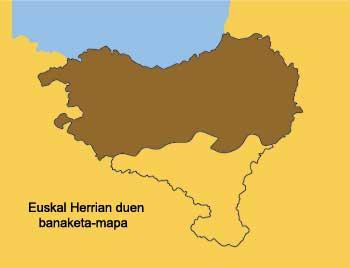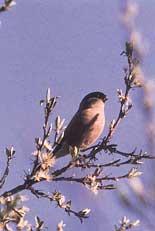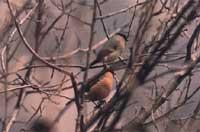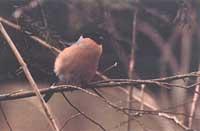La cimera, a beautiful woodland lover

The beak (Pyrrhula pyrrhula) is one of the most beautiful birds that inhabit the trees, and due to the bright colors that the male has, who has seen it will hardly forget the pint of this tiny cap.
The beak (Pyrrhula pyrrhula) is a bird of the same size as that of the common finch (Fringila coelebs), with a length of 16-18 cm and a weight of 21-27 g. And like the rest of frigids, it is phytophagus, especially that of seeds. His appearance is not as slender as that of many members of this family. On the contrary, the ridge is a little bird, rounded, collar and heady, and the brevity of its conical and robust beak gives it an even thicker appearance.

As for the color, the adult specimens have the head, the beak and the black remnants feathers and the white bishopric. As in many birds that live in the forest or on the shores of the woods, in the case of undergrowth sexual dimorphism is also evident in its color. While the female's back is brown grey, and the potato and the light grey belly, the male has striking bluish grey dorsal areas and paparos and reddish belly.
This beautiful bird is a bird of very calm, suspicious and irreverent character, so its contemplation is quite simple. As for his way of life is totally arboreal and always goes up and down in trees and groves, without just descending to the ground. As far as food is concerned, it is a kind of phytophagus, so its diet varies according to the time of year: in spring it vomits the buds and the flowers, but over the years it feeds on fruits and seeds to obtain a greater energy value that these offer. As in the rest of the frigids, in the case of the cumbrera, the beak is a perfect instrument to crush and eat the seeds: the seed adapts to the cavity located in the roof of the mouth and breaks when the lower jaw rises with the maxillary muscle sen-doimento, eliminating the bark of the seed the tongue and swallowing the rest immediately.
Due to the wooded way of life and the feeding of the bird, the understory lives on the shores of the woods, where meadows and tree groups alternate, and especially in hedges dressed in seats.
Spring is also a time of growth for the apparatus, so although throughout the year they live in small groups, at that time couples separate and have a great territoriality. The nest is usually a simple structure in the form of a container of chopsticks and small roots, and when finished the female stays in it for 12-14 days, for four or five blue eggs that are put on successive days.

During this time the male is dedicated to defending the small territory of the nest and feeding the female. And that is the great sexual dimorphism of these birds: the female has to be long in the nest, so it has low colors so that the enemies do not see it. The male, for his part, is in charge of the defense of the territory and helps the striking bright colors.
On the other hand, the txitos spend between 16 and 18 days before being able to fly in the nest, and since the territory of these birds is usually small, the feeding of the offspring is usually a work to be done between the male and the female. Most seed producers feed their insect chickens, but also suck it and other carduelinos (karnabes, txokos, etc.) give them seeds next to insects. In the paparo all the scarves are collected to then reach the nest and deliver them to the txi-toes. In this way, the chapel can form 2 or 3 chitazos a year and from summer all live in small families until the following spring.
But with autumn you can also reach snow and devices can make partial migrations, although normally residents in our region are sedentary. Like some species of trees and bushes that obtain food, in the northern areas the cimera can not be lined in winter and can move south or to the places where the food is. In the same way, when numerous crops are harvested, the indigenous population can increase spectacularly due to immigration, which can have serious consequences in some regions, which occasionally become plague in territories with an abundance of fruit trees.

As for its distribution, subsistence is a Euro-Siberian species, so we could find it in almost all of Europe, although rarer in the Mediterranean region. Very sparse in the Iberian peninsula, exclusive nesting in the north and in the vicinity of the Pyrenees. In Euskal Herria, on the other hand, it is a species that reproduces normally in the Euro-Siberian region, both in beech, oak, marojales or mixed forests. In the center and south of Alava and Navarre, we can find it in the mezzanines of the mountainous areas, especially in the marojales and quejigales, and also in the holm oaks.
Technical information Species: Pyrrhula pyrrhulaFamily: |





